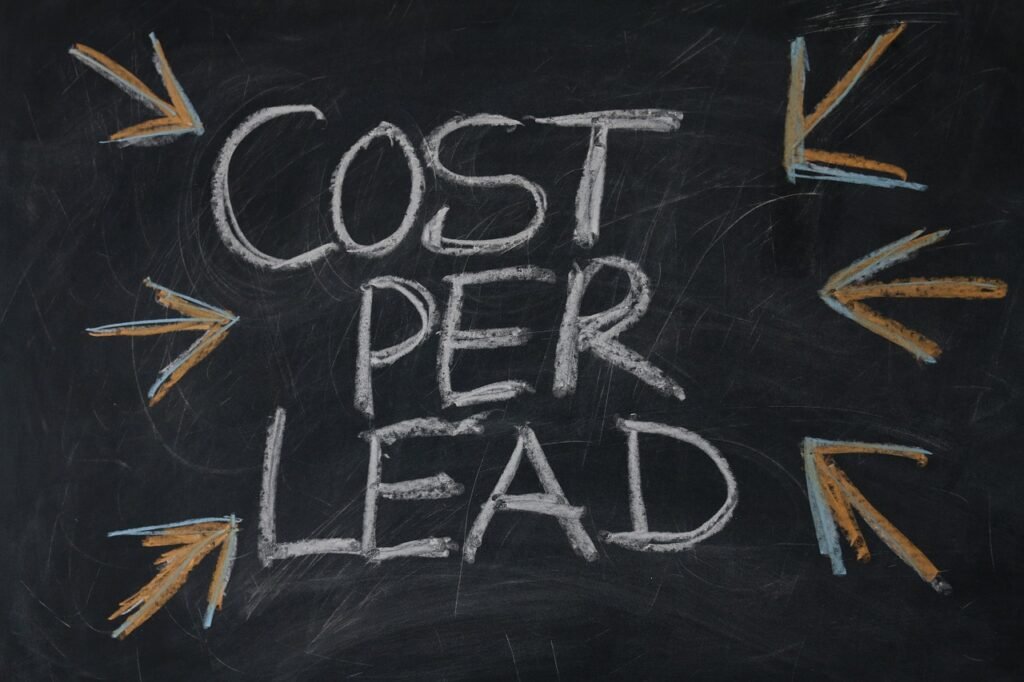Social psychology explores how people think, feel, and behave in social situations. It’s a fascinating field that can be brought to life through creative projects. Whether you’re a student, teacher, or just someone interested in human behavior, using creative projects to explore social psychology can be both enlightening and enjoyable. This article will dive into various ways to use creative projects to understand and demonstrate key concepts in social psychology.
Understanding Social Influence Through Role-Playing

Role-playing is an excellent way to explore social influence, a core concept in social psychology. Social influence refers to the ways in which individuals change their behavior to meet the demands of a social environment. This can include conformity, compliance, and obedience.
Start by setting up scenarios where participants must act out different roles. For example, one project could involve a mock jury trial where participants must deliberate and come to a consensus. This activity can highlight how group dynamics and peer pressure influence decisions.
Another idea is to create a scenario where participants must follow the orders of an authority figure, similar to the famous Milgram experiment. This can be a powerful way to illustrate obedience and the impact of authority on behavior.
Encourage participants to reflect on their experiences and discuss how they felt during the role-play. What influenced their decisions? How did they feel about conforming to the group or following orders? These discussions can lead to deeper insights into how social influence works in real life.
Exploring Group Dynamics with Collaborative Art Projects
Group dynamics refer to the behaviors and psychological processes that occur within a social group. Exploring these dynamics through collaborative art projects can be both revealing and fun.
One project idea is to create a large mural or collage where each participant contributes a piece. As they work together, observe how they interact, make decisions, and resolve conflicts. Do some people naturally take on leadership roles? How do they handle disagreements or different artistic visions?
After the project is complete, discuss the process as a group. What strategies did they use to collaborate effectively? How did they overcome any challenges? This project can help participants understand how groups function and the various roles individuals play within them.
Strategic Use of Diverse Art Mediums
To deepen the exploration of group dynamics, use diverse art mediums that require different skill sets and perspectives. Incorporate painting, sculpture, digital art, and mixed media into the project. This diversity will highlight how various talents and viewpoints can contribute to a cohesive whole.
Assign specific roles based on participants’ strengths and preferences, such as a coordinator, a materials manager, or a creative director. This not only makes the project more organized but also mimics real-world team structures where different roles must work together towards a common goal.
After the project, discuss how the diversity of mediums and roles influenced the group dynamics. Did participants feel more engaged and valued when their specific skills were utilized? How did the variety of art forms affect the overall collaboration and final product?
Incorporating Themes and Messages
Choose a theme or message for the collaborative art project that resonates with the participants. This could be related to social issues, personal growth, or community values. Working towards a shared theme can enhance group cohesion and purpose.
For example, a theme of “unity in diversity” can encourage participants to explore how their unique backgrounds and perspectives contribute to the group. This approach not only enriches the artistic process but also provides a meaningful context for discussing group dynamics.
During the project, encourage participants to express their thoughts and feelings about the theme through their contributions. Afterward, hold a discussion about how the theme influenced their work and interactions. This can lead to deeper insights into how shared goals and values impact group behavior and cohesion.
Real-Time Feedback and Iteration
Implement a system of real-time feedback and iteration to enhance the collaborative process. Set up regular check-ins where participants can share their progress, provide feedback to each other, and make adjustments based on group input.
For instance, have participants present their work at different stages and receive constructive feedback from the group. This encourages open communication, flexibility, and continuous improvement—key elements of effective group dynamics.
Discuss the impact of this iterative process on the group. How did receiving and giving feedback influence their work and relationships? Did the opportunity to iterate on their contributions lead to better outcomes and a more cohesive final piece?
Documenting the Process
Documenting the entire process of the collaborative art project can provide valuable insights into group dynamics. Use photos, videos, and written reflections to capture each stage of the project, from initial brainstorming to the final presentation.
Assign a few participants to act as documentarians, responsible for recording the process and gathering reflections from the group. This documentation can be reviewed later to analyze how the group evolved over time, how conflicts were resolved, and how decisions were made.
After completing the project, review the documentation as a group and discuss the key moments and turning points. What were the major challenges and successes? How did the group’s approach change over time? This reflection can offer strategic insights into how group dynamics unfold and how to manage them effectively in future projects.
Applying Insights to Business and Team Building
Translate the insights gained from the collaborative art project into actionable strategies for business and team building. Identify specific behaviors and strategies that contributed to effective collaboration and discuss how these can be applied in a business context.
For example, if the group found that regular feedback sessions significantly improved their work, consider implementing similar check-ins in your team’s workflow. If assigning specific roles based on strengths enhanced the project’s outcome, think about how you can better leverage individual talents within your team.
Create a strategic plan for incorporating these insights into your team’s daily operations. This might include developing a more structured approach to team roles, enhancing communication channels, or fostering a more inclusive and creative work environment.
Building a Culture of Creativity and Collaboration
Use the collaborative art project as a foundation for building a culture of creativity and collaboration within your organization. Encourage ongoing creative projects and team-building activities that foster open communication, mutual respect, and collective problem-solving.
Establish regular “creative days” where team members can work on collaborative projects unrelated to their usual tasks. This can help maintain the momentum and insights gained from the initial art project, keeping creativity and collaboration at the forefront of your organizational culture.
Encourage team members to share their creative processes and outcomes with the wider organization. This not only celebrates the success of the projects but also reinforces the value of creativity and collaboration in achieving business goals.
By exploring group dynamics through collaborative art projects, you can gain valuable insights into how teams function and how to foster more effective collaboration. These strategic and actionable approaches can help you build stronger, more cohesive, and more creative teams, both in the context of art projects and in the broader business environment.
Investigating Social Identity with Personal Narratives
Social identity theory suggests that a person’s sense of who they are is based on their group membership(s). To explore this concept, you can have participants create personal narratives or autobiographies that focus on their social identities.
Ask participants to write about their experiences with different social groups, such as family, friends, cultural groups, or professional organizations. They can also create visual representations of their social identities, such as photo collages or digital stories.
Encourage participants to share their narratives with the group and discuss how their social identities have shaped their behaviors and perceptions. How do they feel about their various group memberships? How do these identities influence their interactions with others?
This project can provide a deeper understanding of social identity and its impact on behavior, as well as foster empathy and appreciation for the diverse experiences of others.
Examining Stereotypes and Prejudice Through Theater
Theater can be a powerful medium for exploring stereotypes and prejudice. By acting out scenarios that involve different forms of bias, participants can gain a better understanding of these complex issues.
Create short plays or skits that depict situations involving stereotypes, discrimination, or prejudice. These could be based on real-life events or entirely fictional scenarios. After each performance, hold a discussion about what was portrayed. How did the characters’ actions reflect common stereotypes or prejudices? How did these biases affect the characters involved?
This project not only raises awareness about the harmful effects of stereotypes and prejudice but also encourages participants to think critically about their own biases and how they can work to overcome them.
Developing Empathy Through Role Reversal
One effective strategy to deepen the impact of theatrical projects on stereotypes and prejudice is to incorporate role reversal. In this approach, participants are asked to play roles that are different from their own backgrounds and experiences. This can help them understand perspectives and challenges that they might not encounter in their daily lives.
For example, if you are exploring gender stereotypes, have male participants play female characters facing discrimination and vice versa. Similarly, for racial or cultural stereotypes, assign roles that require participants to step into the shoes of someone from a different race or culture.
After the performances, facilitate a discussion where participants can share their experiences and reflections. What did they learn about the challenges faced by the character they portrayed? How did it feel to experience bias from the other side? This exercise can foster empathy and a deeper understanding of the impact of stereotypes and prejudice.
Creating Interactive and Participatory Theater
Interactive and participatory theater, such as Forum Theatre, can be a powerful way to engage participants in examining stereotypes and prejudice. In this format, a scene is performed in which the protagonist encounters a form of discrimination or bias. The scene is then replayed, and audience members are invited to step in and suggest or enact alternative actions that the protagonist could take to challenge the bias.
This method encourages active engagement and problem-solving. It allows participants to explore different strategies for addressing prejudice and to see the immediate impact of these strategies in a safe, controlled environment.
After the interactive session, discuss the different approaches suggested by the audience. What strategies were most effective in challenging the bias? What did participants learn about the complexities of confronting stereotypes and prejudice? This discussion can lead to actionable insights that participants can apply in real-world situations.
Using Real Stories for Authenticity
To make the exploration of stereotypes and prejudice more impactful, base your theatrical scenarios on real stories and experiences. This adds authenticity and emotional depth to the performances, making the issues more relatable and poignant.
Collect stories from people who have experienced discrimination or bias firsthand. With their permission, adapt these stories into scripts for your plays or skits. Ensure that the portrayal is respectful and accurate, and consider inviting the storytellers to participate in the process if they are comfortable doing so.
After the performances, facilitate a discussion about the real-life implications of the scenarios. How did knowing that the stories were real affect the participants’ perceptions? What can be learned from these experiences to help combat stereotypes and prejudice in everyday life?
Incorporating Diverse Perspectives
Ensure that your theatrical projects include diverse perspectives to provide a comprehensive exploration of stereotypes and prejudice. This can involve bringing in guest speakers, collaborators, or advisors from different backgrounds to contribute to the development and performance of the plays.
For example, if your project focuses on racial stereotypes, involve individuals from various racial and ethnic backgrounds in the scripting and acting process. This not only enriches the content but also ensures that the portrayal of issues is accurate and sensitive.
Encourage participants to draw on their own experiences and insights during the creative process. This inclusivity can lead to richer, more nuanced performances and discussions, enhancing the overall impact of the project.
Implementing Post-Performance Workshops
After the theatrical performances, conduct workshops that delve deeper into the issues presented. These workshops can include activities such as group discussions, reflective writing, and role-playing exercises that build on the themes explored in the plays.
Design the workshops to be interactive and participatory, encouraging all participants to share their thoughts and feelings. Use guided questions to prompt reflection on personal biases, the impact of stereotypes, and strategies for promoting inclusivity.
For example, a workshop following a play about workplace discrimination might include activities where participants role-play as both the victim and the perpetrator, exploring different ways to address and resolve the situation. This hands-on approach reinforces the lessons from the performances and provides practical tools for combating prejudice.
Creating a Safe Space for Open Dialogue
Ensure that the environment in which these theatrical projects and discussions take place is a safe space where participants feel comfortable expressing their thoughts and experiences. Establish ground rules for respectful dialogue and active listening.
Encourage participants to share their personal stories and experiences with stereotypes and prejudice. This sharing can build trust and foster a sense of community. It can also provide valuable insights into the various ways that bias manifests and affects individuals.
Consider having a trained facilitator or counselor present during discussions to support participants who might find the topics emotionally challenging. This support can help manage sensitive conversations and ensure that everyone feels heard and respected.

Exploring Social Roles with Simulation Games
Simulation games can provide deep insights into how social roles shape behavior. Social roles are the parts people play as members of a social group, and each role comes with its own set of expectations. To explore this, create a game where participants are assigned different roles within a simulated society.
For example, you could set up a simulation of a small town where each participant has a specific role such as mayor, teacher, police officer, or shop owner. Throughout the simulation, participants must interact with each other and make decisions based on their roles.
After the simulation, hold a debriefing session where participants discuss their experiences. How did their assigned roles influence their behavior and interactions with others? What challenges did they face, and how did they overcome them? This project can reveal the powerful impact of social roles on individual behavior and group dynamics.
Creating Complex Role Dynamics
To deepen the exploration of social roles, design simulation games that incorporate complex role dynamics and interdependencies. Create scenarios where the success of each participant’s role depends on collaboration and negotiation with others. This can reveal how social roles function in more intricate and realistic settings.
For instance, in a simulated business environment, assign roles such as CEO, marketing manager, financial officer, and customer service representative. Introduce challenges that require participants to work together, such as launching a new product or handling a crisis. This setup encourages participants to understand the interconnectivity of roles and the importance of effective communication and teamwork.
Discuss how these interdependencies influenced participants’ actions and decisions. What strategies did they use to collaborate? How did role-specific expectations affect their behavior and problem-solving approaches? This reflection can provide valuable insights into the dynamics of real-world team structures and interactions.
Incorporating Role-Playing with Real-World Scenarios
Enhance the realism of your simulation games by incorporating role-playing based on real-world scenarios. Choose scenarios that are relevant to the participants’ personal or professional lives, making the experience more relatable and impactful.
For example, if the participants are startup founders, create a simulation game where they have to navigate a funding round, manage a product launch, or handle a PR crisis. Assign roles such as investor, product manager, PR specialist, and customer. This approach helps participants understand the different perspectives and responsibilities involved in running a startup.
After the simulation, facilitate a discussion on how the roles and scenarios mirrored real-life challenges. What insights did participants gain about their own roles and those of others? How can they apply these learnings to improve their real-world interactions and decision-making processes?
Using Technology to Enhance Simulations
Leverage technology to make your simulation games more immersive and interactive. Use digital platforms and tools that can simulate complex environments and track participant interactions in real-time.
For example, use online simulation tools like SimCity for urban planning scenarios or business simulation software for corporate role-playing. These platforms can provide a more dynamic and engaging experience, allowing participants to see the immediate consequences of their decisions.
Additionally, consider using virtual reality (VR) to create immersive simulations. VR can place participants in highly realistic environments where they must navigate their roles and interact with others in a lifelike setting. This can deepen their understanding of social roles and the impact of their actions.
Discuss how the use of technology influenced the simulation experience. Did it enhance the realism and engagement? How did it affect participants’ understanding of their roles and interactions?
Introducing Role Rotation
To provide a comprehensive understanding of different social roles, incorporate role rotation into your simulation games. Allow participants to experience multiple roles within the same simulation, rotating roles at different stages.
For instance, in a simulated government scenario, participants could start as citizens, then rotate to roles such as legislators, judges, and law enforcement officers. This approach helps participants understand the various perspectives and responsibilities within a system, fostering empathy and a broader understanding of how different roles interact and influence each other.
After the simulation, discuss the impact of role rotation on participants’ insights and behavior. How did experiencing different roles change their perceptions and actions? What did they learn about the interconnectedness of social roles and the importance of understanding multiple perspectives?
Applying Insights to Organizational Development
Translate the insights gained from simulation games into actionable strategies for organizational development. Identify specific behaviors and dynamics that contributed to successful role performance and collaboration. Discuss how these can be applied to improve organizational structures and processes.
For example, if participants discovered that clear communication and role clarity were crucial for effective collaboration, consider implementing regular team meetings and role-specific training in your organization. If empathy and understanding of different roles were beneficial, create opportunities for cross-functional training and role shadowing.
Develop a strategic plan for incorporating these insights into your organizational practices. This might include revising job descriptions, enhancing communication channels, or fostering a more collaborative and inclusive work environment.
Building a Culture of Role Awareness and Flexibility
Use the learnings from simulation games to build a culture of role awareness and flexibility within your organization. Encourage employees to understand and appreciate the different roles within the team and how they contribute to overall success.
Implement regular workshops and team-building activities that highlight the importance of various roles and promote flexibility. Encourage employees to take on different responsibilities and support each other in their roles. This not only enhances team cohesion but also prepares the organization to adapt to changing circumstances and challenges.
Analyzing Groupthink with Problem-Solving Tasks

Groupthink occurs when a group makes faulty decisions because group pressures lead to a deterioration of mental efficiency, reality testing, and moral judgment. To explore this concept, set up a problem-solving task where participants must work together to find a solution.
Divide participants into small groups and give each group a complex problem to solve. The task could be something like planning a community event, developing a marketing strategy, or solving a hypothetical crisis. Encourage the groups to reach a consensus.
After the task, discuss the decision-making process with each group. Did they experience any pressure to conform to a particular idea? Were dissenting opinions suppressed or ignored? This discussion can help participants understand the symptoms of groupthink and the importance of encouraging diverse perspectives in decision-making processes.
Designing Multi-Phase Problem-Solving Tasks
To gain deeper insights into groupthink, design multi-phase problem-solving tasks that require iterative decision-making. In the first phase, groups work independently to develop initial solutions. In the second phase, groups present their solutions to each other, followed by a discussion and critique session. In the third phase, groups refine their solutions based on the feedback received.
This approach highlights how initial ideas can evolve and improve when subjected to critical analysis and diverse viewpoints. It also helps identify whether groups become more prone to groupthink in subsequent phases when faced with the need to conform and reach consensus quickly.
Discuss the impact of each phase on group dynamics and decision-making. How did feedback influence their solutions? Did groups become more open to diverse perspectives or did they conform more to dominant ideas?
Implementing Structured Decision-Making Techniques
Introduce structured decision-making techniques to mitigate groupthink during problem-solving tasks. Techniques such as the Delphi method, nominal group technique, or Six Thinking Hats can provide a framework for encouraging diverse viewpoints and critical analysis.
For example, use the Six Thinking Hats technique where each participant adopts a specific perspective (e.g., logical, emotional, creative, etc.) during the discussion. This ensures that different aspects of the problem are considered and prevents dominance by a single perspective.
After the task, evaluate the effectiveness of these techniques in reducing groupthink. Did structured approaches lead to more balanced and well-considered decisions? How did participants feel about the decision-making process compared to unstructured discussions?
Encouraging Anonymous Feedback
To further explore groupthink, encourage anonymous feedback during problem-solving tasks. Use tools like online surveys or suggestion boxes where participants can submit their ideas and critiques without revealing their identities. This can help surface dissenting opinions that might otherwise be suppressed due to peer pressure.
Incorporate this anonymous feedback into the group discussions and decision-making process. Analyze how the inclusion of anonymous viewpoints affects the group’s final decision. Does it lead to more innovative and balanced solutions? How does it impact the dynamics of group discussions?
Simulating High-Stakes Scenarios
Simulate high-stakes scenarios to observe how stress and urgency influence groupthink. Create scenarios where quick decisions are necessary, such as crisis management or emergency response situations. The added pressure can reveal how groupthink tendencies are exacerbated in stressful environments.
Assign roles within each group to simulate real-world pressures, such as a CEO, crisis manager, or communications officer, each with their own priorities and pressures. Observe how these roles and the urgency of the situation influence group decision-making.
Discuss the impact of stress and high stakes on the groups’ ability to avoid groupthink. What strategies did they use to manage the pressure while still encouraging diverse perspectives? How can these strategies be applied in real-world high-pressure situations?
Role of Leadership in Mitigating Groupthink
Examine the role of leadership in preventing groupthink by assigning different leadership styles to each group. For instance, one group might have a directive leader, another a facilitative leader, and another a laissez-faire leader. Observe how these different styles affect group dynamics and the prevalence of groupthink.
Discuss how leadership influenced the decision-making process. Which leadership style was most effective in encouraging open dialogue and critical thinking? How did leaders handle dissenting opinions and ensure that all voices were heard?
Based on these observations, develop guidelines for effective leadership practices that mitigate groupthink, such as fostering an open environment, encouraging dissent, and using structured decision-making techniques.
Applying Insights to Business Practices
Translate the insights gained from analyzing groupthink in problem-solving tasks into actionable strategies for your business. Identify specific behaviors and practices that helped mitigate groupthink and promote these within your organization.
For example, if anonymous feedback proved effective, consider implementing regular anonymous surveys or suggestion boxes in your business. If structured decision-making techniques were beneficial, incorporate these into your regular meetings and decision-making processes.
Develop a strategic plan to foster a culture that values diverse perspectives and critical thinking. This might include training programs for leaders on how to encourage open dialogue, creating policies that support transparency and inclusivity, and setting up systems for regular feedback and reflection.
Continuous Improvement and Reflection
Make the analysis of groupthink an ongoing practice within your organization. Regularly reflect on past decisions and group dynamics to identify signs of groupthink and areas for improvement. Encourage a culture of continuous learning and adaptation.
Set up regular debriefing sessions after major projects or decisions to evaluate the decision-making process. Use these sessions to discuss what went well, what could be improved, and how to apply these learnings to future decisions.
Conclusion
Exploring social psychology through creative projects offers a dynamic and engaging way to understand human behavior and group dynamics. Whether through role-playing, collaborative art, theater, simulation games, or problem-solving tasks, these activities provide valuable insights into how people interact, influence, and perceive one another in social contexts.
For startup founders, integrating these projects into your organizational practices can yield significant benefits. They not only enhance team cohesion and communication but also foster a culture of empathy, inclusivity, and critical thinking. By understanding the intricacies of social influence, group dynamics, stereotypes, social roles, and groupthink, you can create a more adaptive and innovative environment.
Read Next:
- The Link Between SEO Budget and Long-Term ROI for Startups
- ROI-Driven Startup SEO Strategies: A Budgeting Guide
- Factors Influencing Startup SEO Budget Allocation
- Allocating Resources: Creating a Comprehensive SEO Budget Plan
- How to Determine the Right SEO Budget for Your Startup






















Comments are closed.